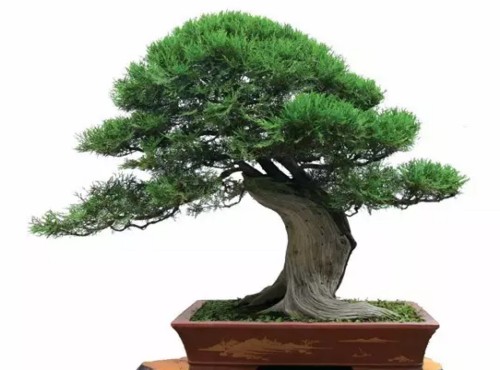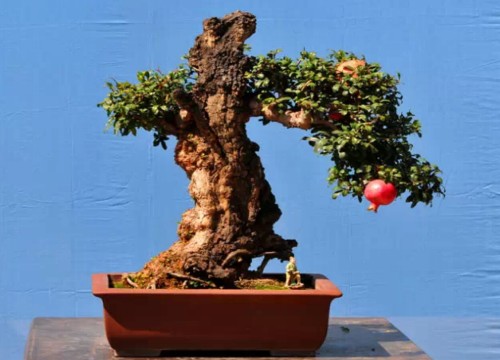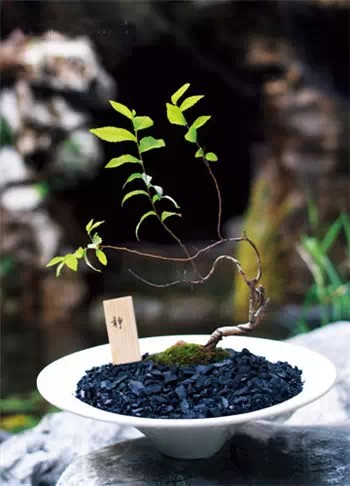Making method of Platycladus orientalis bonsai
Platycladus orientalis, cypress family, platycladus genus. Strong nature, do not choose soil, but slow growth, life is extremely long, more than a thousand years of cypress everywhere. The ornamental value of Platycladus orientalis bonsai is very high, to maintain its beautiful posture, watering must be sprayed. Wash off dust and dirt on its leaves, branches and pots, which is conducive to lighting and breathing, so that it has youthful vitality and vitality.

The piles of Platycladus orientalis bonsai are mostly dug in the mountains. Choose the pile blank with strong growth and beautiful roots, cut off unnecessary branches and old roots, select slightly sandy yellow loam, plant it in the mud basin, irrigate the first time, do not need shade, but strengthen water management. In the case of pot soil is not dry, pay attention to spray its branches and leaves, keep it moist.
After planting, attention should be paid to the prevention and control of diseases and insect pests. In order to prevent virus infection, attention should be paid to spraying carbendazim, junduqing, thiophanate-methyl and other drugs. Because the injured branches of Platycladus orientalis are easy to get withered branches disease. Before the new branches are extracted from the newly planted piles, they are most easily damaged by the longicorn beetle. It lays its eggs in the old layers or holes of the trunk. After the eggs become larvae, they drill into the growth layer of the trunk, nibble on the growth layer, absorb the sap, and kill the pile blank. Control of this insect drugs are: dichlorvos, dichlorophophos kill, monocrotophos and so on. For larvae entering the cortex, the above drugs can also be used. Use a needle to find the hole, inject the liquid medicine, and then seal the hole with mud or surface to kill the insects.
After the Platycladus orientalis pile blank survives, it should be fertilized in time. It is best to retting good liquid fertilizer, compound fertilizer can also be. Platycladus orientalis likes water and fertilizer, reasonable use, can be good for cattle growth, promote its multiple germination points, rapid growth of branches. Don't prune its branches and leaves for the first year, let it grow naturally for a year. Cut back the next year in the peak season, keeping the buds and branches needed for its shape, removing the excess, and making a pruning adjustment to the roots.
Platycladus orientalis can be made in various forms of modeling, straight stem, inclined stem, curved dry cliff, etc. can be. According to the natural conditions of stumps, choose the position and orientation of piles, plant them in pots, climb and prune them, and adjust the branches. The first time plastic branches to stay more, in the process of gradual formation later if the branch density is too large, you can cut off some appropriate.
Platycladus orientalis bonsai shaping techniques, flexible and changeable practices, cut off the trunk branch, climbing tie pull, can be adopted. It is best to shape the branch slightly more than the ideal position, for example, when pulling down, to pull down some more in the best position, to be released from the attachment, there is a certain rebound space.
After shaping, Platycladus orientalis should be carefully maintained. Control and prune excessive branches. For excessive leaves, often use hands to pull their buds, do not use scissors to cut, so as not to produce yellowing points, affecting the viewing effect. Do not let the pull or wire into the branches, so as not to affect the growth of branches, or even cause death. It usually takes at least five years for a pile blank to become a mature bonsai work of art, and the longer the time, the better the viewing effect.
Time: 2019-05-26 Click:
- Prev

Production techniques of pomegranate bonsai
Pomegranate is a deciduous tree or shrub of the genus Pomegranate in the pomegranate family. It blossoms in summer with large color and long flowering period. It is a good ornamental tree species for flower, fruit, leaf and shape. There are many varieties of pomegranate, which are mainly divided into fruit pomegranate and flower pomegranate. Pomegranate likes to be warm and sunny, cold-resistant, drought-resistant and waterlogging-resistant.
- Next

Bonsai production with the theme of "Jing"
I used to think that freedom means doing whatever you want, no one cares about no restrictions, and only in this way can you live freely. It was later found that only with self-discipline can there be freedom, and laissez-faire will not bring freedom, but will be surrounded by aimless anxiety. When a person lacks self-management
Related
- Fuxing push coffee new agricultural production and marketing class: lack of small-scale processing plants
- Jujube rice field leisure farm deep ploughing Yilan for five years to create a space for organic food and play
- Nongyu Farm-A trial of organic papaya for brave women with advanced technology
- Four points for attention in the prevention and control of diseases and insect pests of edible fungi
- How to add nutrient solution to Edible Fungi
- Is there any good way to control edible fungus mites?
- Open Inoculation Technology of Edible Fungi
- Is there any clever way to use fertilizer for edible fungus in winter?
- What agents are used to kill the pathogens of edible fungi in the mushroom shed?
- Rapid drying of Edible Fungi

